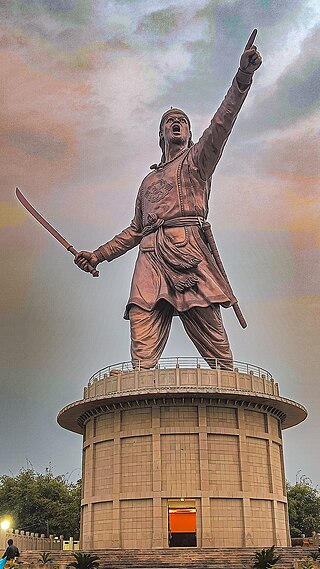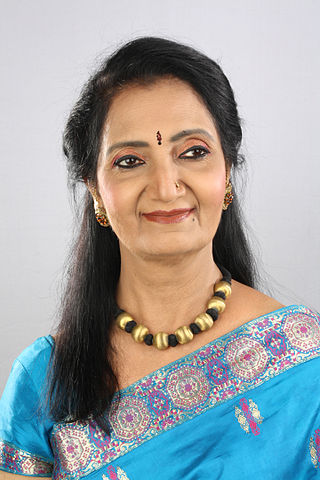
Bihu is of three types and it is an important cultural festival unique to the Indian state of Assam – 'Rongali' or 'Bohag Bihu' observed in April, 'Kongali' or 'Kati Bihu' observed in October or November, and 'Bhogali' or 'Magh Bihu' observed in January. The festivals present an admixture of Tibeto-Barman, Austroasiatic and Indo-Aryan traditions entwined so intricately that it is impossible to separate them—festivals which are uniquely Assamese to which all communities of Assam had contributed elements. The Rongali Bihu is the most important of the three, celebrating spring festival. The Bhogali Bihu or the Magh Bihu is a harvest festival, with community feasts. The Kongali Bihu or the Kati Bihu is the sombre, thrifty one reflecting a season of short supplies and is an animistic festival.

Lachit Borphukan was an Ahom Borphukan, primarily known for commanding the Ahom Army and the victory in the Battle of Saraighat (1671) that thwarted an invasion by the vastly superior Mughal Forces under the command of Ramsingh I. He died about a year later in April 1672.

Barua is a common Assamese surname shared by the Assamese communities much like Aroras of Punjab.

Assamese literature is the entire corpus of poetry, novels, short stories, plays, documents and other writings in the Assamese language. It also includes the literary works in the older forms of the language during its evolution to the contemporary form and its cultural heritage and tradition. The literary heritage of the Assamese language can be traced back to the c. 9–10th century in the Charyapada, where the earliest elements of the language can be discerned.

Assamese cinema is the Indian film industry of Assamese language. It is based in Assam, India. The industry was born in 1935 when Jyoti Prasad Agarwala released his movie Joymoti. Since then the Assamese cinema has developed a slow-paced, sensitive style. In the beginning the industry were called Jollywood, for Agarwala's Jyoti Chitraban Film Studio.

The culture of Assam is traditionally a hybrid one, developed due to cultural assimilation of different ethno-cultural groups under various political-economic systems in different periods of its history.

Prof Bhabananda Deka was a pioneer Assam economist and author who conducted novel research on the economy of the far eastern part of India. He was also a leading Indian-Assamese litterateur of the famed 'Awahon-Ramdhenu Era' of Assamese literature during the mid-20th century. He was the author of a total of 115 English and Assamese books including textbooks on a range of fifteen subjects including economics, ancient Assamese literature, philosophy, education, religion, mythology, archaeology, tribal study, poetry, drama, memoirs, civics, political science, biographies; he also edited books and journals. He also authored a variety of research papers and articles about the state of Assam, a state in the north-eastern part of India. He pioneered the writing of books on Economics in Assamese. His Assamese book Axomor Arthaneeti was the first ever research-based comprehensive book on Assam Economics, which was published for the first time in 1963. He was conferred with the honorary title of 'Asom Ratna' -- 'Jewel of Assam' by the intellectuals of Assam on 19 August 2007 at a public meet held under the presidency of Prof. (Dr) Satyendra Narayan Goswami.

Borgeets are a collection of lyrical songs that are set to specific ragas but not necessarily to any tala. These songs, composed by Srimanta Sankardeva and Madhavdeva in the 15th-16th centuries, are used to begin prayer services in monasteries, e.g. Satra and Namghar associated with the Ekasarana Dharma; and they also belong to the repertoire of Music of Meghalaya outside the religious context. They are a lyrical strain that express the religious sentiments of the poets reacting to different situations, and differ from other lyrics associated with the Ekasarana Dharma. Similar songs composed by others are not generally considered borgeets.

Joi Barua is an Indian singer and music composer. Born in Digboi, Assam, he started his career by singing advertising jingles and later did playback singing for Hindi, Assamese and Telugu films. He is also the lead vocalist of the band Joi. Barua has a mixed musical style incorporating elements of rock, soul, jazz, folk and world music.

Folk dances of Assam include the Bihu and the Bagurumba, the Bhortal, the Ojapali dance. Assam is home to many groups: Muslim, Indo-Aryan, Rabha, Bodo, Dimasa, Karbi, Mising, Sonowal Kacharis, Mishmi and Tiwa (Lalung) etc. These cultures come together to create an Assamese culture. Residents of the state of Assam are known as "Axomiya" (Assamese). Most tribes have their own language, although Assamese is the primary language of the state.
Rameshwar Pathak was an acclaimed Kamrupi Lokgeet singer from Kamrup, Assam, India. He also worked as a teacher in Arya Vidyapeeth Higher Secondary and Multipurpose School, Guwahati from 1963 to 1996.

Beauty Sharma Barua is a singer from Assam, India. She is one of the best-known and most respected Assamese folk music, Indian classical music, ghazal and bhajan singers of Assam. More popularly known as The Melody Queen of Assam and Beauty Baideu, she has recorded over a thousand songs for All India Radio, Doordarshan, albums and others. She has sung songs in over six regional Indian languages, though primarily in Assamese and Hindi. Beauty Barua married renowned writer and lyricist Dwijendra Mohan Sharma (1948–2006), called the Man with Melody in His Pen by The Daily Telegraph, in 1976.
The Kamrupi people are a linguistic group that speak the Kamrupi dialects of Assamese and are found in the colonial Kamrup district region of Assam, India.
Jhanji is a small semi-rural area situated in Sivasagar and Jorhat districts. The river Jhanji River divides these two districts.

Baharul Islam is an Indian theater actor. An alumnus of the National School of Drama, which he had joined in 1987 Baharul has acted in more than 80 plays, designed and directed 30 plays for his theater troupe Seagull. He is one of the busiest theatre artists in Assam. He is also a film actor who works in Assamese and Hindi films.

Hepaah is a 2003 Assamese musical drama film directed by Shankar Borua and produced by Mothiasiga Pictures. The story of the film revolves round the rise of a ragtag band, Hepaah, of small-town musicians and tells the story of hope and frustration of the young generation against the "politically turbulent backdrop" of Assam. The film stars Biju Phukan, Jatin Bora, Geetawali Rajkumari in the lead roles and was released on 19 December 2003.
Poley Poley Urey Mon is a 2011 Indian Assamese language drama film directed by Timothy Das Hanche, produced by Phukan Konwar, Purnananda Gogoi and Beauty Baruah under the banner Hills Motion Pictures Association of Diphu. The casts of the movie are Nipon Goswami, Moloya Goswami, Barsha Rani Bishaya, Gayatri Mahanta, Ravi Sarma, Rimpi Das, Parineeta Borthakur, Tarun Arora, Mahika Sharma etc. Bollywood actor Raza Murad and former Assam CM Tarun Gogoi also performed a cameo in this movie.












